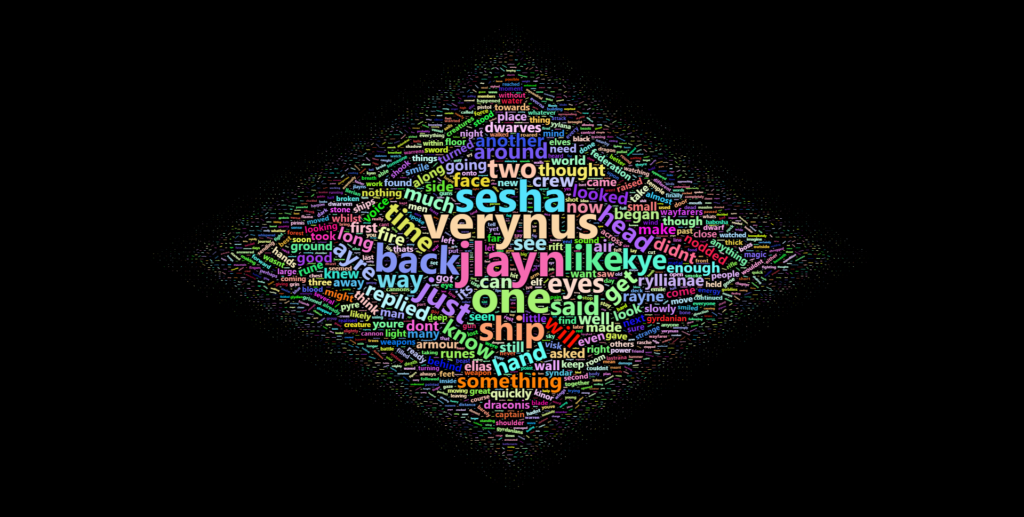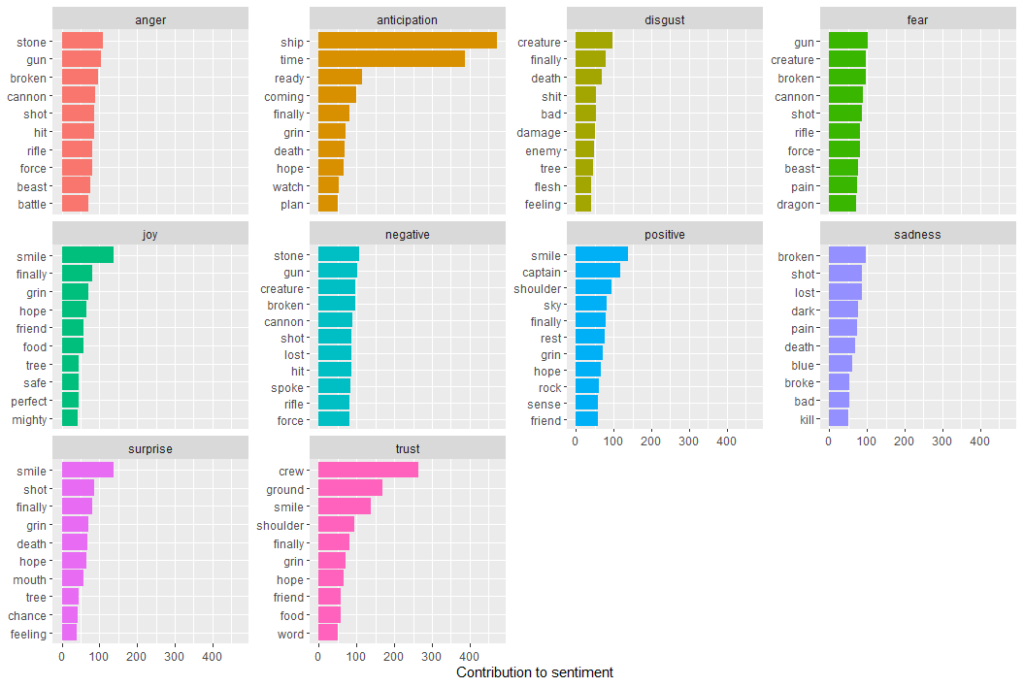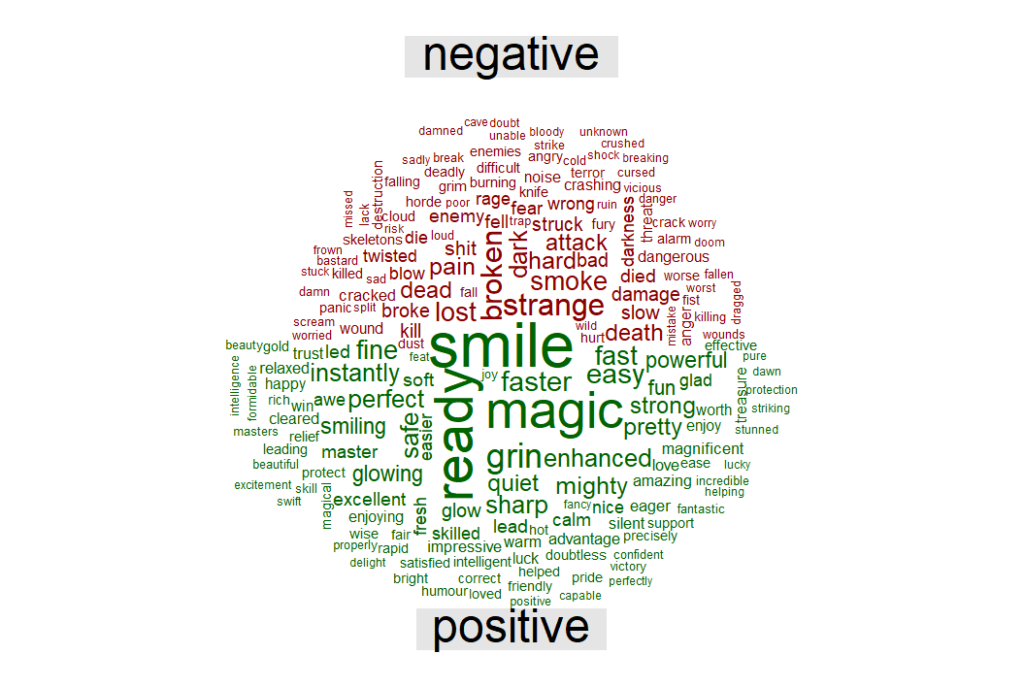Analysing my writing #1: Draconis
About this post:
All of the analyses on this page have been completed using the R programming language. I currently work within the field of data science as a project manager and in an effort to become more technical have taken it upon myself to learn R in my spare time. Using it to analyse my books seemed like a logical step – though *inserts disclaimer* I am a beginner and these stats could very well be wrong.

What am I feeling right now? In one word: relief.
Though it likely doesn’t mean much in the grand scheme of things, the fact that the three primary characters, Sesha, Verynus and Jlayn, have similar mentions (600, 652, 660 respectively), makes me feel like the split in Draconis for the primary characters is relatively even. That might be true, it might not, but I’m going to choose to believe it is.
Something I personally find interesting is the use of ‘one’. As you’ll see in later iterations of this post when I get onto The Great Hearts series, I seem to use ‘one’ more than almost any other word. That isn’t something that I was remotely aware of and now I am painfully aware of it. Rest assured, ‘one’ shall not have such high status in future novels!

The above graph shows the prevailing sentiment of groups of 80 words using the ‘nrc’ lexicon within R. What we can essentially see in the above is overarching sentiment throughout the novel, particularly highlighting the tone of the action-packed ending.
Draconis is written from multiple perspectives with different viewpoints occuring within the same chapter. This likely results in some of the volatility shown, as whilst something negative might be happening to one of the characters another might be happily exploring the new world.
The novel opens on a positive note, following Sesha, the young Wayfarer, as she dreams about joining the next expedition to explore the new world. The large chunk of negative sentiment that first occurs is likely the primary introduction to Verynus as he defends Llianis, an island fort, against assault. The chunks of negativity that make up the rest of the book most likely revolve around the multiple battle scenes, both in the new world and at home. Draconis has many encounters with monsters – both intelligent and not – as well as strife with other humans. Some of these scenes are short, fast encounters whilst others are multi-chapter battles, which will help account for the wider sections of red.
As for the ending? Well, you’ll have to read that to find out.

The nrc lexicon breaks down sentiment into different areas as seen above. Overall, the words fall under positive or negative, but each is comprised of the surrounding elements such as joy or fear.

All of which allows for a fun look at the positive and negative words used within Draconis. Unlike the first word cloud, which was a count purely of the most used words, this is a word cloud of the sentiment analysis, representing how often the words are used and how much they contribute to their relative sentiment.